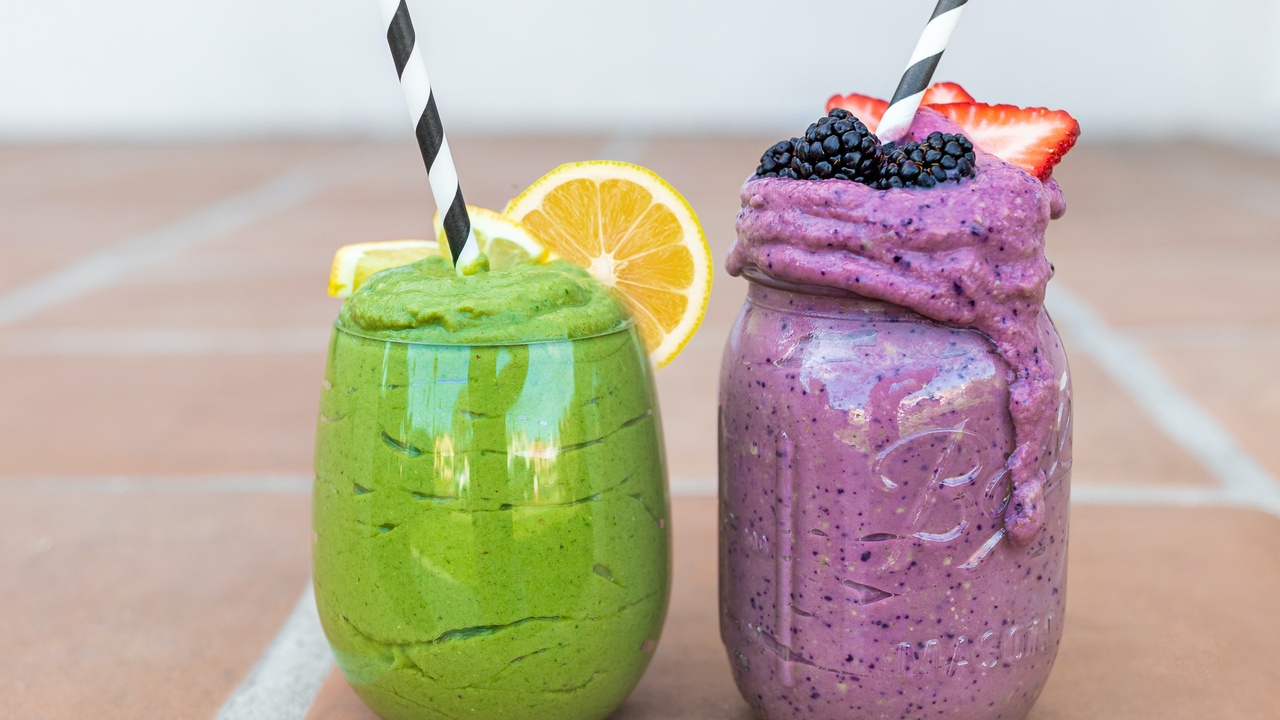Blend It Up

Food - fun and healthy….not a chance I hear you say, but there are ways of being creative with food which will keep even the fussiest eaters coming back for more.
If you’re struggling to get your ‘5 a day’ into your daily routine, or worse are still struggling to get the nutrients into your children (if you have them), then smoothies can be a healthy and fun alternative. There are however certain do’s and don’ts…
The don’ts
The main problem with blending all your fruits into one giant drink is that there is a high likelihood that it will be a sugary paradise and the exact reverse of what you are trying to achieve. Blended fruits have a lot of the fibrous (sugar stabilising) content broken down while at the same time liberating large amounts of fructose sugars. The combination is stressful on your liver, bad for your blood sugar and will assist you on a pathway to adding fat to your body which is probably not why you were doing it in the first place. Generally if it looks bright pink and red, smoothies will be sweet and that most likely means, sugar.
The do’s
To create the perfect smoothie we want to try (as much as taste will allow) to add a blend of vegetables without affecting the flavour too much. On top of that, we can add some supplements and spices which all help to keep us healthy. In practice, this may be a little trial and error but before long you will find what works for you (and your family) within their personal tastes.
Base - This is the watery content that helps to emulsify the rest of the smoothie. Some people just use ice cubes but others prefer a little drop of apple/orange juice or milk (almond, cow, oat) etc.
Thickeners - Fruits like peaches, bananas, nectarines and plums can all work to add texture to your smoothie. Adding in a handful of oats if you want it more filling and slightly thicker. If you want to keep the sugar content lower then use an avocado instead, which contains more fat rather than sugar.
Content - Vegetables and fruits which add colour and flavour are a vital addition to your smoothie. Carrots and pumpkin are really useful in this regard, but beware that a mix of coloured vegetables tends to leave you with a slightly off-putting brown concoction!
Superfoods - One of the known superfoods which can be added to a smoothie is celery. However, it appears that no matter how you try to hide it, celery flavouring tends to dominate and therefore is likely to upset those fussy smoothie drinkers.
Additives - Natural additives including turmeric, nutmeg and cinnamon are a welcome addition to your recipe. Cinnamon is known for its sugar stabilising effects and turmeric (although this may drastically alter the flavour) is known for its anti-inflammatory properties. If you want more of a ‘chocolaty’ flavour, then some cacao powder usually works a treat.
Supplements - Adding multivitamin drops (for those fussy eaters) to help them get some Vitamin D3 and perhaps some Vitamin B complex (for vegetarians and vegans) is another great bonus.
If you’re still not sure what you are doing and worried about making start we’ve created some basic starters recipes for you to try your hand:
|
2 cored apples 160g frozen raspberries 130ml of natural yoghurt 2 TBSP of rolled oats 100ml milk 50ml water - as ice cubes ( depending on how thick the smoothies becomes). |
1 banana 25g peanut butter 1 tbsp rolled oats 200ml milk (cows or oat) Pinch of cinnamon |
We would love for you to share some of your smoothie successes and disasters. Tell us what you liked and what you didn’t in the comments below, or email us [email protected]
Lastly the final tip of using a blender - just remember to put the lid on!
Author: Dr. Adam Greenfield, Co-founder of WorkLifeWell | Doctor of Chiropractic | Wellness Specialist
Follow Adam on LinkedIn


